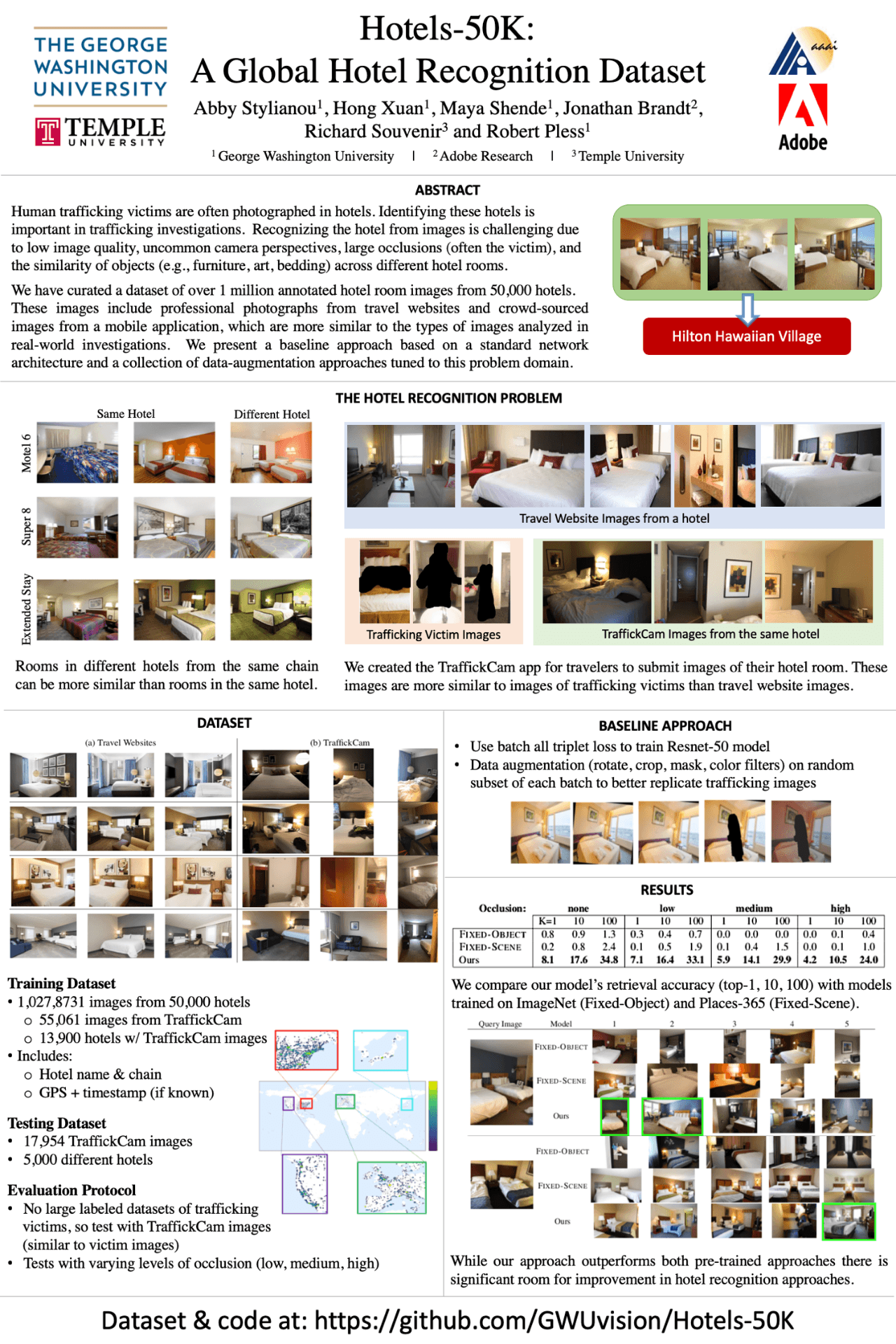I was at the Danforth Plant Science Center all day yesterday as part of my on-boarding process. It was super fun -- lots of hearing stuff I didn't fully understand about plant biology, but also a lot of people excited to start thinking about imaging and image analysis in their work, plus the folks working on TERRA and TERRA adjacent stuff. Also gave a talk about vision for social good (finding a lost grave, using shadows to validate images on social media, TraffickCam) + visualization work. I was a bit worried it was light on anything having to do with plants at all, but folks seemed to love that. (A friend there specifically told me she was recruiting folks to attend by telling them it would be an hour without having to hear about plants.)
Today was spent putting together our poster for AAAI and working on getting the code finalized for release. The code repository is mostly ready to go but there's still a bit of work tomorrow to finish up on the re-producability section (re-producing our baseline results) and some of the evaluation code (all stuff that exists in the repo from the paper, just has to get cleaned up and moved over to the "published" repo).
You can see our AAAI poster below. This is not my best poster by any stretch. It's a small format (28" x 42") and I kind of think I tried to fit too much on there. Part of me wanted to just put the title and a ton of pictures of hotels and tell the story at the poster. But my goals with posters are always to (1) make it coherent even if someone doesn't want to talk to me at the poster (I'm never a fan of posters that aren't clear without either reading the paper or having a 20 minute conversation with the author), (2) make sure there is a storyline that is clear and compelling and (3) not necessarily repeat every bit of information or experiment from the paper. I think this poster still meets those goals but does not do it as well or as cleanly as previous posters that I've made. We made some effort to remove extraneous bits and add some white space but it still feels super busy. Time constraints ended up driving me to just get it printed, as I'm heading out of town tomorrow night, but I kind of wish I'd started working on this early enough to have a few more cycles on it.





